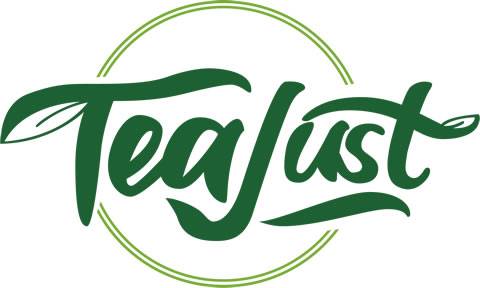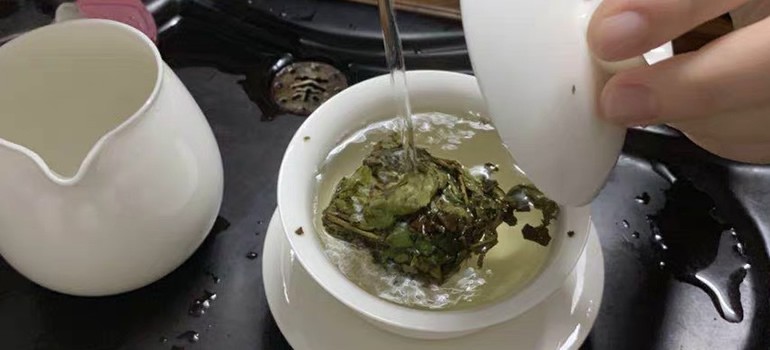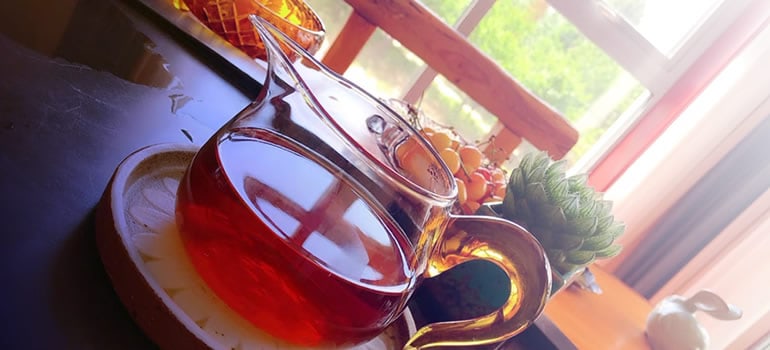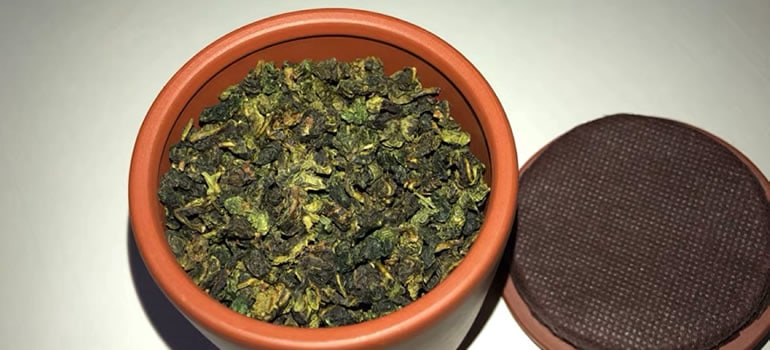
Cinnamon is a spice that is loved by many. It is also one of the best spices you can use during the colder winter seasons.
Even the flavor of cinnamon breaths of winter.
Cinnamon has been held in high regard ever since its discovery in ancient times. In fact, the use of cinnamon in the traditional Chinese herbalism dates back to 3000 BC.
Cinnamon has many secrets.
It has been associated with different medicinal properties, and its culinary properties cannot be easily substituted.
Cinnamon can be used in many different ways, one of which is for the preparation of cinnamon tea.
What Is Cinnamon Tea?
Cinnamon tea is considered a tisane, and as the name suggests, it is prepared from grounded cinnamon or whole cinnamon sticks.
However, unlike some other spices, it is super tasty even on its own and goes well with different types of food.
Cinnamon is considered to be one of the best and healthiest spices, and it is both easy to obtain and add to one’s diet.
It can be added to other types of tea to make them taste a little different, or it can be used for the preparation of its own brewed tea. And this is what we are going to explore in this article.
What Is the Flavor Profile of Cinnamon Tea?
Cinnamon tea has a uniquely warm and mellow woody and musty taste. The savory, full-bodied flavor has distinct notes of resin and spice. It is frequently associated with the winter season and holidays.
The cinnamon tea has a light amber to light golden or brown color when prepared.
So What Exactly Is Cinnamon?
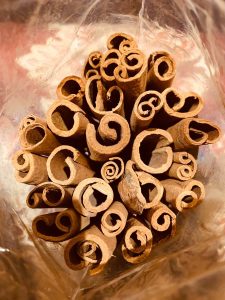
Cinnamon is made from the inner layers of the bark of the trees that belong to the genus Cinnamomum. You can think of them as cinnamon trees.
The bark of these trees is shaved. Then the inner bark is shaved off and left to dry. As these thin pieces of bark dry, they naturally curl up and become the cinnamon we know.
Depending on how the pieces of bark were shaved, you can end up with cinnamon sticks of varying sizes. Some can be even longer than your hand.
There are a lot of different trees that belong to that group and can be considered cinnamon trees. However, not all of them are used commercially.
The most widely used types of cinnamon come from four trees:
- Cinnamomum aromaticum – This tree is native to China, and it is used for making Cassia cinnamon;
- Cinnamomum verum – This tree is native to Sri Lanka, and it is used for making Ceylon cinnamon;
- Cinnamomum burmanni – This tree is native to Indonesia, and it is used for making Korintje cinnamon;
- Cinnamomum loureiroi – This tree is native to Vietnam, and it is used for making Saigon cinnamon.
What Are the Different Types of Cinnamon?
Four different types of cinnamon are sold on the market today.
Cassia Cinnamon
Cassia cinnamon is the most widely used and sold type of cinnamon. It is inexpensive and can be found in most grocery stores and shops.
It has a darker and deeper reddish-brown color. It is usually comprised of a single thicker layer of bark that is harder to break.
Cassia has a full-bodied, sweet, and spicy taste.
And it has a higher coumarin content, which can vary between 1% to 3%.
Saigon Cinnamon
Saigon cinnamon can be considered a variation of the Cassia cinnamon.
It has similar properties and features. It has a spicy and warm taste.
It contains high amounts of coumarin – up to 8%.
Korintje Cinnamon
This is another variation of the common Cassia cinnamon. It is the most commonly imported type of cinnamon in North America.
It contains about 4% coumarin.
Ceylon Cinnamon
Ceylon cinnamon (often considered true cinnamon), on the other hand, has a lighter color, usually tan or light brown. It is comprised of multiple thin, delicate layers of bark that are easy to break.
It has a warmer and sweeter taste and a slightly fragrant aroma.
It is more expensive (some times as much as 10 times the price of Cassia cinnamon) and contains negligible amounts of coumarin – about 0.04%.
What Is Coumarin?
You may have noticed that the different types of cinnamon are very similar except for one thing – the coumarin content. And as it turns out, this is a very important aspect that deserves our attention.
Coumarin (1) is a flavoring agent that is naturally found in cinnamon.
Coumarin was used as a food additive in the U.S. However, in 1954, the FDA banned its use. The reason was that scientists found that it can be toxic to the liver and kidneys.
Scroll forward to 2006, a metastudy (a study which gathered and reviewed all the available data on this topic) concluded that there is indeed a link between coumarin and liver damage in animals. Still, for humans, it remains relatively safe when consumed in low quantities.
The people that are at risk are the ones that either take high amounts of coumarin on a daily basis or have high sensitivity to it.
Today there is a set maximum of how much coumarin can be used in beverages and foods. Foods should not contain more than 2 mg/kg (about 0.9 mg/lb) and no more than 10 mg/l (0.3 mg/oz).
When Is the Best Time to Drink Cinnamon Tea?
Cinnamon tea can be consumed at any time of the day.
Drinking cinnamon tea before bed can help you relax and unwind after a long day. It will stimulate your metabolism by speeding up the digestion of food and improve the quality of your sleep.
Adding a little milk or honey can also help your sleep quality.
Cinnamon is caffeine-free, so it will not disturb your sleep in any way.
However, keep in mind that some cinnamon tea blends can contain caffeine from other sources like black or green tea.
You can drink cinnamon tea in the morning and afternoon for a quick pick me up and boost in digestion and metabolism. Drinking cinnamon tea during the day is a great way to shed off the extra weight.
What Is the Best Type of Cinnamon for Tea?
The best kind of cinnamon is hands down Ceylon cinnamon. What makes it the best choice is the fact that it has a more mellow taste, aroma, and negligible amounts of coumarin.
People that have been drinking cinnamon tea for longer periods of time may sometimes want to go for a stronger and spicier cinnamon tea. As a result, they may turn to one of the Cassia types of cinnamon, which have a more potent and spicier taste.
However, as previously noted, all types of Cassia cinnamon contain high amounts of coumarin. So this is not recommended.
A good alternative is to opt for Ceylon cinnamon sticks or cinnamon powder as opposed to bagged cinnamon. These are more concentrated and stronger.
How to Prepare Cinnamon Tea?
Cinnamon tea is super easy to prepare, and there is an excellent variety of different cinnamon tea recipes.
Cinnamon tea can be prepared from tea bags (frequently in the form of different tea blends), by using cinnamon sticks, or ground cinnamon.
Cinnamon can also be used to flavor and sweeten up other types of tea, especially herbal teas.
How to Prepare Pure Cinnamon Stick Tea
Pure cinnamon tea is prepared without any other ingredients besides cinnamon. The result is a mild tea that has a distinct deep woody and pungent taste with a spicy, slightly sweet aftertaste.
What you will need:
- 1 stick of cinnamon or 1 teaspoon of cinnamon powder;
- 8 to 24 oz of water;
Method 1:
Place the cinnamon in a cup. Bring the water to a boil and pour it in the cup. Let it steep for 8 to 15 minutes. Remove the cinnamon stick and enjoy your cinnamon tea.
Method 2:
Pour 8 oz of water in a small pot, add one cinnamon stick and bring the water to a boil. Once the water starts boiling, remove the pot from the stovetop and let it steep for 10 to 20 minutes. When ready, strain the tea.
Method 3:
Place one cinnamon stick in a pot and add 3 cups of water. Bring the water to a rolling boil, lower the heat, and let it simmer for 20 minutes. When ready, just pour the cinnamon tea through a strainer to remove the hard parts, and you are good to go.
How to Mix Cinnamon Tea With Other Teas
The second way to prepare cinnamon tea is to mix it with a different kind of tea. This can be done with either a tea bag or loose leaf tea.
Some of the best teas that you can mix with cinnamon tea are black tea, rooibos, honeybush, chamomile, and mint tea.
Pour 1 cup of water in a small pot and bring it to a boil. Pour the water in a teacup or a mug, add the cinnamon stick and cover the cup. Let it steep for 15 minutes, then add your favorite tea and continue steeping it for an additional 2 to 3 minutes. And when ready, remove the cinnamon stick and the tea bag or strain it to remove the loose leaf tea.
- Cinnamon Turmeric Green tea
Bring 1 cup of water to a boil, add a half a stick of cinnamon, one green tea bag, and a pinch of powdered turmeric.
- Cinnamon Citrus tea
Prepare your basic cinnamon tea and add orange, lemon, or lime juice to it.
- Cinnamon Ginger tea
Add one teaspoon of ground ginger or 1 tablespoon of freshly cut ginger and one cinnamon stick to 8 oz of water and bring it to a boil. Let it steep for 10 to 15 minutes. When ready, add some lemon and voila – you have a powerful tea remedy for the flu season.
- Cinnamon Green tea
Mix cinnamon tea with some green tea. This combination is great for weight loss, and if you want to sweeten it up, try using some stevia instead of sugar or honey.
- Cinnamon Apple tea
Prepare the standard cinnamon tea then add some dried bits of apple, apple slices, or a little natural apple juice.
Cinnamon Sticks vs. Powdered Cinnamon
Technically speaking, both types of cinnamon can be used for tea preparation.
With that being said, the sticks are usually the preferred way to go. Cracked cinnamon sticks are ideal for infusing water because they add depth and warmth without the taste being too overwhelming.
Conversely, you can also use ground cinnamon. This results in a tea with a thicker consistency and stronger, more potent, and pungent flavor that may feel a little too overpowering to some.
Which one you will like better depends on personal taste and preferences.
The sticks have to be steeped for longer, typically between 10 to 15 minutes. In contrast, ground cinnamon is quicker to release its flavor and content and can be steeped for a shorter time, usually between 5 to 10 minutes.
What Ingredients to Add to Your Cinnamon Tea?

If you want to sweeten up your cinnamon tea, you can add some honey, maple syrup, brown sugar, or a natural sweetener.
Cinnamon goes well with some fruits, too, like apples, for example.
Many people also like to spice it up with some lemon, cloves, cardamom, turmeric, or a little black pepper.
Milk is another excellent option to add to your cinnamon tea to make it creamier and thicker.
Can You Reuse Cinnamon Sticks?
Do not throw away your cinnamon stick after you prepare your tea with it. It can be reused 2 to 3 times and even more depending on its size.
Some people even like to nibble on the stick as they drink their tea due to its warm and flavorful taste.
What Are the Nutritional Values of Cinnamon?
Many people may consider cinnamon to be sweet. However, cinnamon is not exactly sweet. The idea that cinnamon contains high amounts of sugar, hence the sweetness, is not exactly right either. It has a mellow, warm taste
On average, 100 grams of cinnamon contains 53 g of fiber and 2.2 g of sugar.
The macros of cinnamon per 100 grams are:
- 247 kcals;
- 4 g of protein;
- 81 g of carbs;
- 1.2 g of fat;
These numbers may seem big, but keep in mind this is per 100 grams of cinnamon. And very rarely does anybody eat that much.
A single stick of cinnamon typically weights between 1.5 to 2 grams.
What Are the Benefits of Drinking Cinnamon Tea?
Although cinnamon is highly-regarded for its culinary properties, it has some proven health benefits.
1. May Help in Managing Blood Sugar Levels
There is a lot of both scientific and anecdotal evidence that cinnamon may have some beneficial effects on the blood sugar levels and insulin sensitivity. (2, 3, 4, 5, 6, 7, 8)
Cinnamon has been associated with several benefits in that regard:
- Cinnamon seems to work in a way similar to insulin which limits the effects of sugar;
- Cinnamon may also slow down the metabolism of carbs lowering blood sugar spikes;
- Cinnamon may be able to improve insulin sensitivity;
- Cinnamon may also be able to lower existing blood sugar levels;
2. Can Alleviate PMS Pain
There is some strong evidence that cinnamon may be one of the best spices for women that have dysmenorrhea, and also strong and painful PMS. (9, 10, 11)
One study had women take 1.5 grams of cinnamon, placebo, or painkillers each day in the first three days of their menstrual cycle. The painkillers had the best effect, followed by cinnamon and the placebo in the last place.
Another study had women take 3 grams of cinnamon vs. placebo in the first three days of their menstrual cycle. The women taking cinnamon reported less pain.
3. May Aid in Losing Weight
Cinnamon is frequently touted as a spice that helps burn fat.
However, the effects of cinnamon on metabolism, BMI, and overall weight loss are vague and unclear. (12, 13)
Some studies link cinnamon to improved BMI, but it is unclear if it was pure fat loss or muscle loss as well.
One study that accounted for these details found that ingesting high amounts of cinnamon on a daily basis results in a 0.7% decrease in fat mass and a 1.1% increase in muscle mass. The research participants were taking 10 grams of cinnamon daily for 3 months.
However, this is an extremely high amount of cinnamon, which contains dangerous amounts of coumarin.
4. Lowers The Bad Cholesterol
Several studies link cinnamon consumption to reduced LDL cholesterol and triglyceride levels. (14, 15, 16)
One study found that just 120 mg of cinnamon taken daily can have positive effects on the bad cholesterol and also improvement in the good cholesterol.
5. Alleviates the Symptoms of Rheumatoid Arthritis
According to one study published in the Journal of the American College of Nutrition, cinnamon consumption can be useful in reducing the levels of inflammation and clinical symptoms in people who have rheumatoid arthritis. (17)
6. May Help With Bad Breath or Tooth Decay
Cinnamon has been found to have strong antibacterial and antifungal capabilities. (18, 19, 20, 21)
This, in turn, may help prevent bad breath and potentially prevent tooth decay.
More studies need to be done to prove those claims, though.
7. May Help in Lowering Sugar Cravings
If you have a little bit of a sweet tooth, then you may have tried different methods of curbing those sugar cravings. But nothing can quite substitute sugar.
This is where cinnamon can offer you a helping hand.
Cinnamon is sweet, almost sugary if you will. Cinnamon has helped people with their sugar cravings due to its natural sweetness, and the best thing is that it contains almost no sugar.
Make yourself a nice batch of cinnamon tea and give it a try. Every time you feel those sugar cravings start to kick in, take a few sips of your cinnamon tea. You may end up being surprised at its effects.
8. Can Boost Your Immune System
Cinnamon contains different antioxidants and has strong antimicrobial properties that may help you during the winter season. (22, 23, 24, 25)
Cinnamon is frequently prepared as a boost me up beverage for people that have caught a cold.
9. It Has Anti-Cancer Properties
Cinnamon has anticancer effects. (26, 27, 28)
According to several studies, the cinnamon extract may have anti-cancer properties.
However, more studies need to be done before making any more concrete conclusions. Right now, most of the studies are done in test-tubes or on animals.
10. May Help Reducing High Blood Pressure
It has been found that cinnamon intake can lower high blood pressure. (29, 30)
However, the effects of cinnamon on blood pressure may not be the same for everyone.
The mechanism behind this is not yet clear, and despite the potential, it has more studies need to be carried out before cinnamon gets officially recognized and recommended for blood pressure control.
What Are the Side Effects of Cinnamon Tea?
That being said, just like any other spice or herb does, cinnamon, too, does have its side effects that you need to consider before indulging in it.
1. Liver and Kidney Damage
As we have explored earlier in this article, cinnamon contains coumarin. When coumarin is continuously being consumed in high amounts, it can cause liver and kidney damage. (31, 32, 33)
2. Allergic reactions
Cinnamon contains compounds that are known to cause allergic reactions in some people. The problem is usually present in people that consume large amounts of cinnamon. (34, 35, 36, 37)
The potential side effects are:
- Tongue swelling;
- Rashes;
- Discomfort or burning sensation;
- Gum irritation;
- Throat irritation;
- Mouth sores, and more.
3. Low Blood Sugar Levels
Cinnamon has been proven to lower blood sugar levels. (38)
This can be a good or a bad thing, depending on how you look at it.
Consuming too much cinnamon with your tea can cause your blood sugar to drop to unhealthy levels. This is known as hypoglycemia. People that are taking diabetes medications are at the highest risk of this happening.
The side effects can vary from dizziness, tiredness, sleepiness to fainting.
4. Edema
One report, it was found that taking 1 gram of cinnamon powder on a daily basis may be connected to edema or fluid retention. (39)
5. May Cause Cancer
Although cinnamon is believed to have some anti-cancer properties eating high amounts of coumarin may potentially increase the risk of cancer. (40)
Studies in animals have shown a link, but the reasons for it are unclear. Some experts speculate that the reason may be due to DNA damage caused by the high amounts of coumarin. (41)
When You Should Not Drink Cinnamon Tea
Although associated with a lot of health benefits, cinnamon may not be suitable for everyone.
Let’s take a look at a few different scenarios.
Can You Drink Cinnamon Tea Every Day?
Ceylon cinnamon tea consumed in moderation should not pose any problems. However, the issue lies when the regular Cassia cinnamon is used on a daily basis in large quantities due to its high amount of coumarin.
Can You Drink Cinnamon Tea If You Are Taking Medications?
Although consuming small amounts of cinnamon is considered safe, eating too much cinnamon can be dangerous, especially if you are taking any medications in the same period.
High amounts of cinnamon can further exacerbate the side effects or enhance their effects.
Make sure to talk to your doctor if you are on any medications for heart disease, liver disease, diabetes, etc.
Can You Drink Cinnamon Tea If You Are Pregnant?
Cinnamon, in general, is safe during pregnancy but only when consumed in limited amounts, which are naturally found in food.
However, even then, cinnamon consumption should be kept to a minimum because even a single cinnamon cookie may contain unsafe amounts of coumarin.
Pregnant women should also avoid drinking cinnamon tea as the concentration of cinnamon is going to be too high.
Can You Drink Cinnamon Tea If You Have Diabetes?
Generally, cinnamon is safe for people with diabetes as long as they do not suffer from any liver or kidney damage and avoid consuming high amounts of coumarin. Prior to taking cinnamon daily or as a supplement, it is recommended to speak with a medical professional.
How Much Is Too Much?
As with everything else in life, cinnamon tea should be consumed in moderation.
Earlier, we explored the potential dangers and side effects of cinnamon consumption. So there is such a thing as having too much cinnamon.
Drinking cinnamon tea daily can easily tip you over the dietary recommendations for coumarin intake.
Consuming between 1 to 6 grams of cinnamon a day is considered to be safe for adults. However, these numbers may vary depending on individual predispositions, sensitivities, and type of cinnamon used.
Especially if you are using Cassia cinnamon for your tea. As you now know, Cassia contains high amounts of coumarin that can sometimes be as high as 8%. This means that even a single teaspoon of cinnamon can be too much.
Coumarin consumption should be kept low, and it is not recommended to take more than 0.05 mg/lb of body weight per day. (42)
A better alternative, in this case, is the Ceylon cinnamon. But with that being said, even then, you should consume it in moderate amounts.
In Europe, the daily coumarin intake should not exceed more than 0.1mg/kg body weight (0.04 mg/lb)
